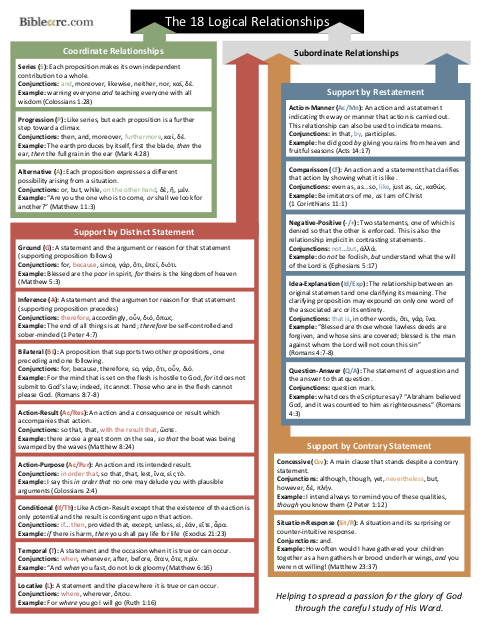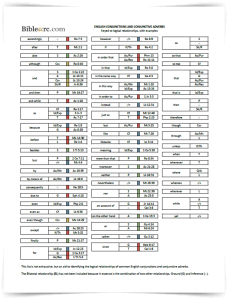Lesson 1 | Coordinate Relationships
The Two Categories of Relationships
We will begin to work through the 18 logical relationships by noting the two major categories that these relationships fall into.
Coordinate vs. Subordinate
John Piper explains it well.
The relationships between propositions fall into two major classes: coordinate relationships and subordinate relationships. Two clauses have a coordinate relationship if one does not support the other in some way, but each is independent and makes its own contribution to the whole. For example: I went to the post office, and I picked Noël up on the way home. These two propositions do not support each other, but describe a series of things I did.
A clause has a subordinate relationship to another clause if it supports that clause in some way. For example: I went to the post office because I had a letter to mail. Here the proposition, 'because I had a letter to mail,' is subordinate to the main clause, 'I went to the post office.' It supports the main clause by giving the ground or cause for going to the post office.
—John Piper, from Biblical Exegesis


Note that only three of the 18 logical relationships fall into the coordinate relationships category. The other 15 and most of the connections in human speech and writing are subordinate.
The way we determine the appropriate logical relationship is through noting five things: conjunctions, grammar, punctuation, content, and context. The first of those, conjunctions, is the most significant.
Print out the following PDFs and keep them at hand as you continue in this course.
 The 18 Logical Relationshipspdf
The 18 Logical RelationshipspdfThis printable cheat sheet gives the category and definition of the 18 logical relationships in Bracketing. It also features common conjunctions and an example verse for each relationship.
 English Conjunctionspdf
English ConjunctionspdfA printable cheat sheet with an expanded list of English conjunctions and their associated logical relationships, with examples.